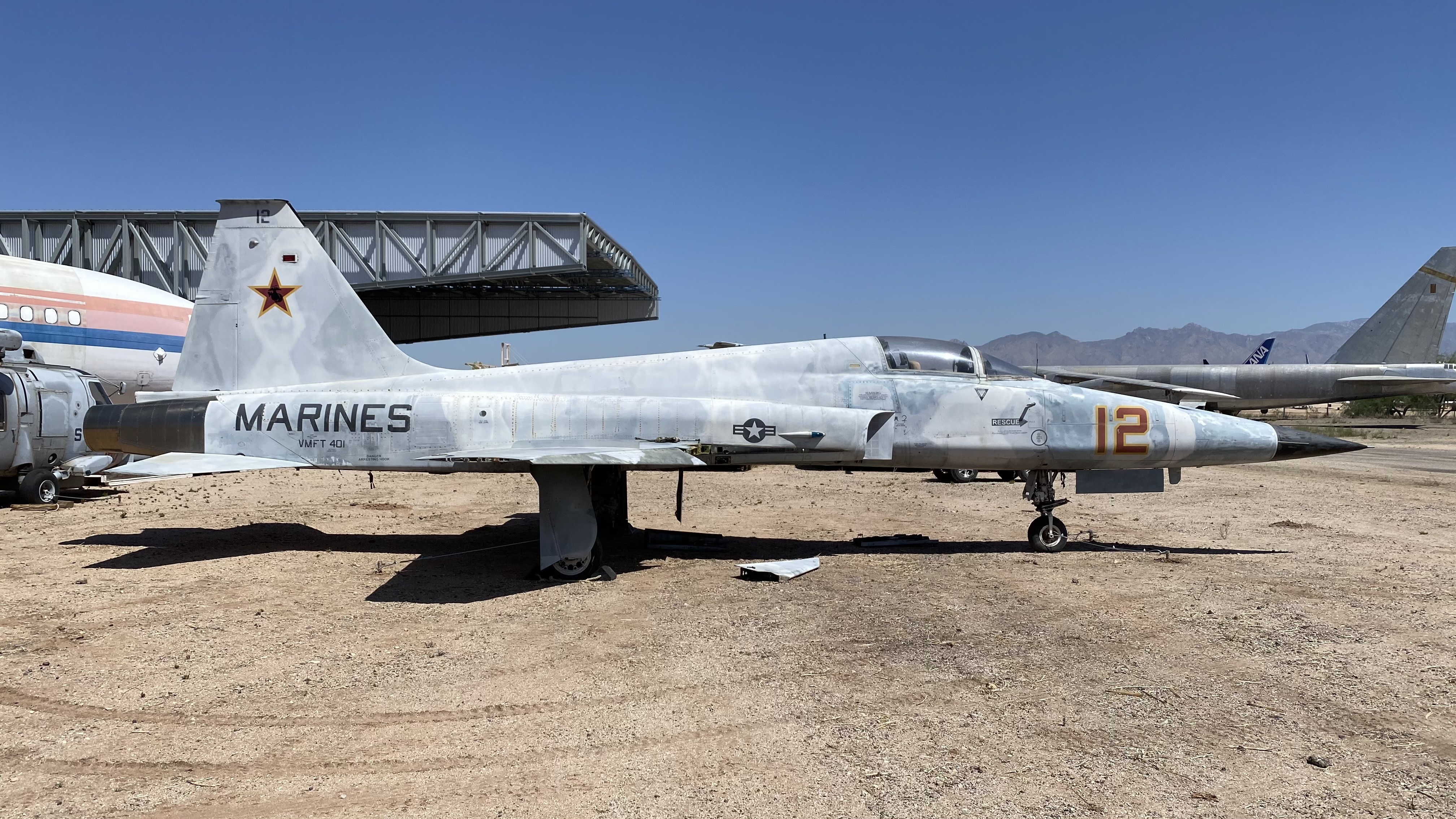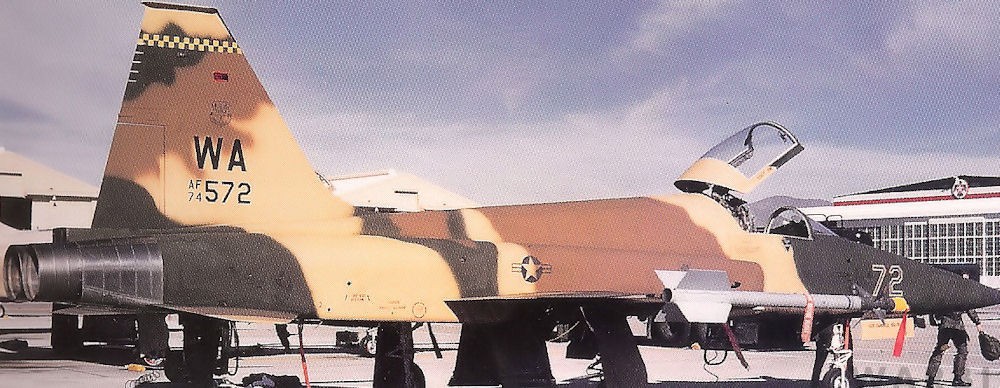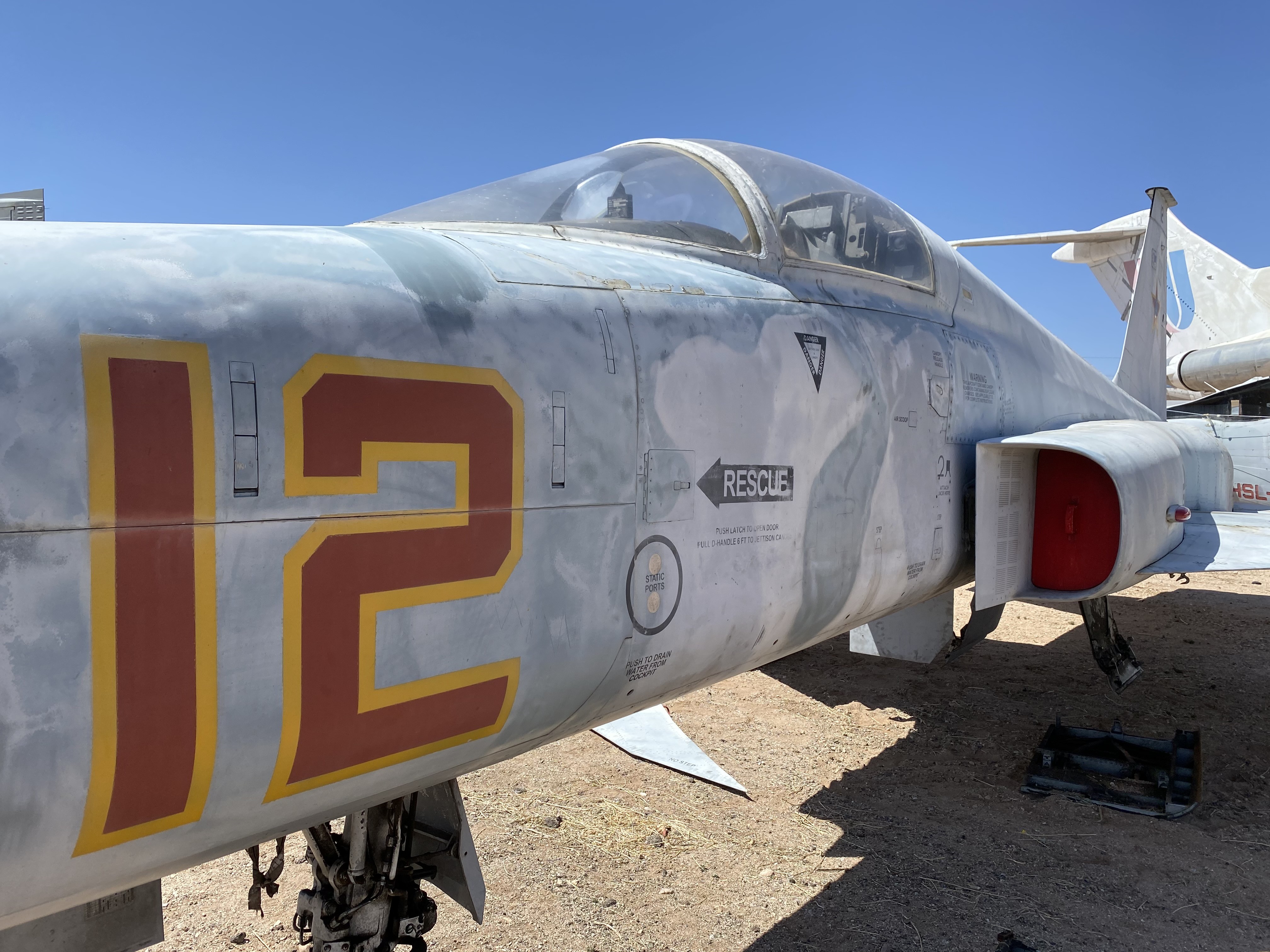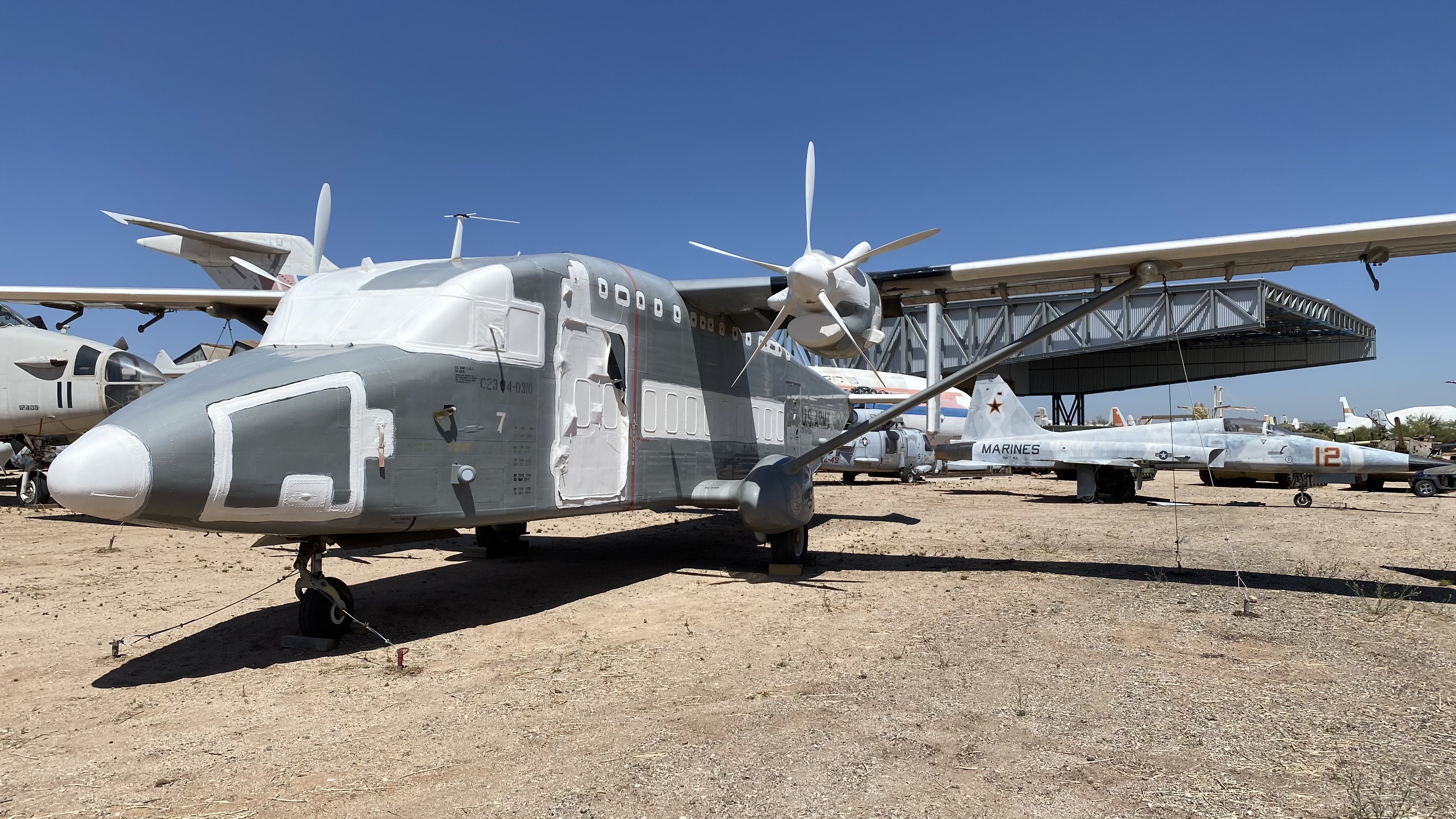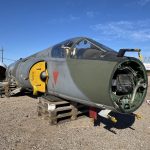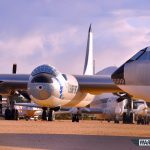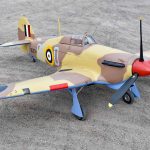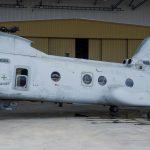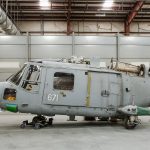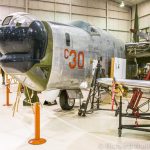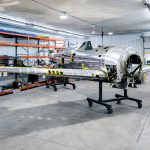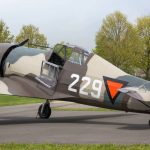The Pima Air & Space Museum in Tucson, Arizona has recently added two new aircraft to their world-class collection of aircraft and historical aeronautica, a former U.S. Navy Northrop F-5E Tiger II (Bu.741564) and a ex-US Army Short C-23B+ Sherpa (94-0310). The Tiger II is on loan from the National Naval Aviation Museum, but until recently it had been on display at the sadly-now-shuttered Flying Leatherneck Aviation Museum near MCAS Miramar in San Diego, California.
This particular airframe rolled off Northrop’s production line in Hawthorne, California during the early 1970s, originally intended for the South Vietnam Air Force. However, South Vietnam collapsed before delivery could take place, so the U.S. Air Force took the Tiger instead, assigning her the serial number 74-01564. She joined the 57th Fighter Weapons Wing at Nellis AFB in Las Vegas, Nevada during 1976 when that unit upgraded their aggressor aircraft from the type’s older sibling, the T-38A Talon.
Since the F-5E closely resembled the MiG-21 in both size and performance, it proved a useful airframe in Dissimilar Air Combat Training through which US Air Force pilots learned how best to defeat the Soviet fighter if they came up against the type in the battle space. Elements of the 57th FWW merged into the 64th Aggressor Squadron during the latter 1970s, and at some point, 74-01564 became the Commanding Officer’s personal aircraft.
Like the U.S. Air Force, the U.S. Navy also had an aggressor program, and they acquired some of the Air Force Tiger IIs, one of these being 74-01564. The F-5E, now with a Bureau Number (741564), moved to VFA-127 at NAS Fallon in Nevada. The unit provided adversarial training for other naval squadrons until its disestablishment in March, 1996. VFC-13 Saints then acquired the Tiger II. The Saints, also based at NAS Fallon, took on the Red Air role when the Naval Fighter Weapons School (aka TOPGUN) relocated to that air station. While the Navy sent Bu.741564 to Northrop’s facility in St.Augustine, Florida for overhaul in 2007, they ended up deciding to retire the tired airframe, realizing that it made more economic sense to employ the low-time, upgraded ex-Swiss Air Force F-5Ns which they’d acquired the previous year. The airframe eventually moved over to the National Naval Aviation Museum’s inventory, and they sent her out on loan to the Flying Leatherneck Aviation Museum, ironically located beside MCAS Miramar, the former home of TOPGUN.
Pima’s newly-acquired Short Sherpa had been in storage in the boneyard at Davis-Monthan AFB, just across the street from the museum, until her recent move. As Pima’s Brad Elliott told us regarding the airframe’s history, “While the data block on the aircraft says C-23C, the Army told us that it is not a C, but a B+. It was originally built as a Short 360 commuter aircraft. Between 1993 – 1997 it flew with Atlantic Southeast Airlines, Simmons Airlines in the U.S. and Air Labrador and Pacific Costal Airlines in Canada. In 1998 it was modified by Short into a Sherpa for the U.S. Army. At this time, we don’t know much about its service with the Army. Looking at pictures, it spent some time in Europe. Based on the remains of the logo on the aircraft, it was assigned to the Multinational Force and Observers, a peace keeping force in the Sinai Peninsula overseeing the Egyptian and Israeli peace treaty. That appeared to be its last assignment around 2013.”
For more information about the Pima Air and Space Museum visit www.pimaair.org







